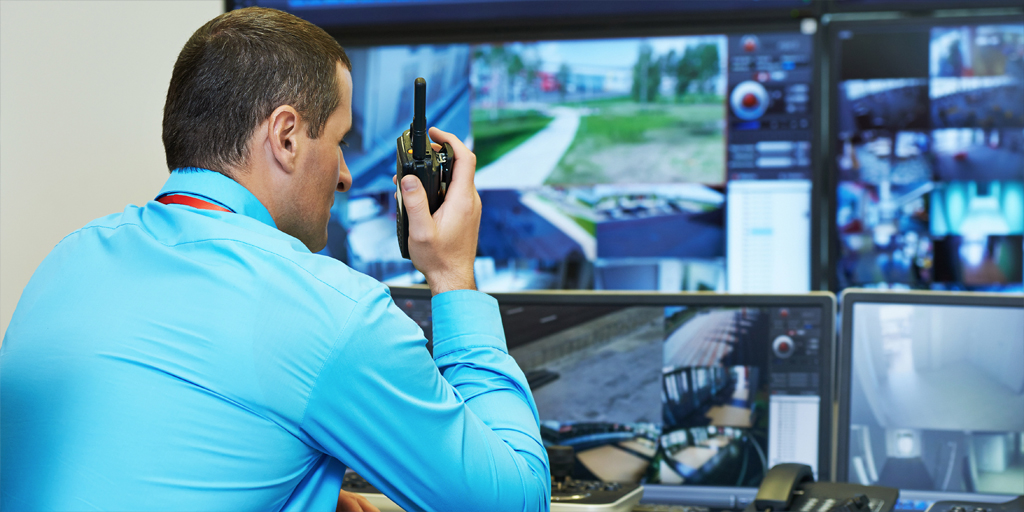A Guide to Business CCTV Systems
High Definition CCTV can prove an effective tool in reducing crime. Camera positioning, lighting and quality setting are all key considerations for ensuring the images produced are clear and of sufficient quality to allow the successful identification of the culprits.
N.B. The requirement to register a High Definition CCTV System with the Information Commissioners Office (Data Protection) and the requirement to keep records of its use does not apply to any residential property or any business premises with a High Definition CCTV System that has less than 4 cameras. The size of image that your cameras capture determines its use in an investigation.
Some of the key locations for positioning of cameras are:
Counters/Tills, access/egress points, any cash in transit routes, routes to safes or areas where cash is housed or counted, and any vulnerable or high risk areas.
External High Definition CCTV Cameras capable of capturing images of potential getaway vehicles or providing further information about offenders and the direction of their travel can be of value.
In terms of robbery, a camera at the point of exit positioned inwards to achieve clear head and shoulder images should be considered essential in order to obtain images of evidential value in court. Criminals will quite often try to hide their identity by wearing, masks, caps or hoods. However, many remove facial coverings on exiting the premises to fit in with the street scene. The access/egress point to the premises is often the only opportunity to obtain a clear facial image.
Cameras which are vulnerable to damage should be protected from attack either by relocation to a higher level and using a bigger lens to achieve the view required, or through the fitting of a vandal resistant housing.
Storage
Home office recommend storage of High Definition CCTV data for 28 days.
Local Authority licensing departments may have specific on the storage of High Definition CCTV data, so checks will need to be made if you are a licensed premises. If there is a violent incident it may be that there is a late reporting of the incident and it is important therefore that images are not lost. High Definition CCTV can assist in recording valuable information on images captured by offenders during the period running up to a robbery or burglary when the premises were being checked out.
Smaller scale premises may consider clear images recorded for 7 days may need the requirements of the business and financial restrictions. A minimum of 7 days recording is suggested, however systems should be in place to ensure images can be downloaded promptly to ensure recordings are not lost.
Your system should be set up to record with the Highest frame rate & Lowest compression rate that your memory permits for the number of days you wish to record.
Quality
Where a High Definition Business CCTV System is in place staff must be trained in how to download images. High Definition CCTV systems (and lighting that support them) should be regularly maintained to ensure continuous quality of image and retention.
Regular checks are recommended to ensure the system is working effectively i.e. correct date and time, images recording clearly etc.
Colour systems are advised wherever possible to gather detailed descriptions.
CCTV lighting compatibility
During daylight hours colour cameras can capture good quality images. However, during the hours of darkness cameras can struggle to capture anything meaningful due to the lack of light. Cameras should automatically swap from colour during the day to black and white at night and be fitted with LEDs as an integral part of the camera, this will provide a clear night image.
Where distance recording is required at night, supplementary LED lighting should be installed as appropriate.
Signage
Signage must be displayed in the customer area advising that High Definition CCTV is in operation, it should state the purpose and provide a name and phone number where images can be obtained. Pictorial signage is preferred (non English speakers).
Additional considerations
A monitor would provide staff with the opportunity of checking for suspicious people or vehicles, loitering and banned/excluded persons to enable staff to refuse entry.
Screens where visitors can see themselves entering the building can prove effective as a preventive measure. Monitors (except comfort monitors) should not be in a position viewable by the public.
The requirements of a High Definition CCTV System can vary from site to site, depending on variables such as the purpose of the system, the physical layout of the site, and the available budget to name a few. A useful manual in planning for a High Definition CCTV system is the: Home Office Operational Requirements Manual, which can be downloaded here.
This article is from ‘A Guide To Business Security‘ produced by Greater Manchester Police.

